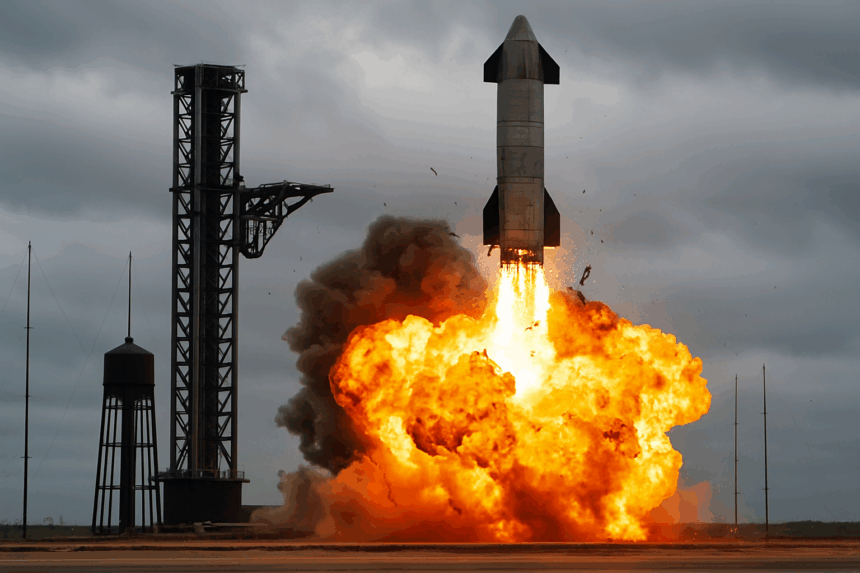SpaceX’s Starship rocket launches for the ninth time, achieving a key milestone by reaching space intact for the upper stage. However, the mission ends in a fiery re-entry failure. This test flight is a critical step toward NASA’s goal of returning astronauts to the Moon. Despite the setback, SpaceX gathers valuable data to improve future launches.
What’s Happening & Why This Matters
SpaceX’s giant Starship rocket lifts off from the Boca Chica launch site in Texas at 6:36 p.m. Central time. The 403-foot-tall vehicle, powered by 33 methane-fueled Raptor engines on its booster stage, arcs over the Gulf of Mexico. The first stage completes its job, sending the upper stage on a suborbital path. For the first time since November’s sixth flight, the second stage reaches space intact.
The mission does not proceed as planned. The booster stage fails to survive its landing burn after an engine-out test, exploding softly in the water. Meanwhile, the upper stage’s payload bay door malfunctions and fails to open, preventing the deployment of simulated Starlink satellites. This disrupts a major test designed to advance SpaceX’s broadband satellite constellation plans.
After a communication blackout as the rocket passes into Earth’s shadow, the upper stage begins to spin uncontrollably. SpaceX reports that a fuel tank leak causes loss of pressure and attitude control. Without control, the rocket re-enters the atmosphere ablaze, disintegrating around 37 miles above the Indian Ocean.
SpaceX CEO Elon Musk acknowledged the leak and loss of pressure in a tweet. He calls the flight a “big improvement” compared to previous tests, noting “a lot of good data to review.” This cautious optimism reflects the incremental progress SpaceX makes with each flight.
NASA closely watches SpaceX’s progress. The space agency awarded SpaceX a $2.89 billion contract to develop Starship’s upper stage as a lunar lander for its Artemis program. NASA also contracts Blue Origin to build a second lunar lander, highlighting the competitive and fast-moving nature of the lunar exploration race.
Private astronaut Jared Isaacman, President Trump’s nominee to lead NASA, praises the transparency of SpaceX’s livestreamed test flight footage. Isaacman notes the broader growth of America’s private space industry, mentioning other emerging programs, such as New Glenn and Vulcan. He frames the setbacks as part of a longer journey toward a “new era of exploration and discovery.”
TF Summary: What’s Next
SpaceX’s ninth Starship flight delivers new insights despite a fiery re-entry loss. The mission marks the first time the upper stage reaches space intact in months, signaling progress in SpaceX’s development program. Challenges with fuel leaks and payload deployment remind the industry of the inherent risks associated with rocket testing.
NASA’s Artemis mission relies on Starship’s continued improvement to safely transport astronauts to the Moon. Meanwhile, private space ventures are expanding, further fueling innovation and job growth in aerospace. Future Starship tests will focus on resolving fuel system issues and improving landing procedures — pushing closer to operational missions beyond Earth.
— Text-to-Speech (TTS) provided by gspeech.



